Tuesday, 26 July 2011
Monday, 25 July 2011
british cavalry at mons
At dawn on Saturday 22 August 1914, C Squadron of the 4th Royal Irish Dragoon Guards, commanded by Major Tom Bridges, pushed out two patrols north from Mons towards Soignies and met the Germans for the first time. There is a memorial near the spot today. C Squadron commenced a reconnaissance along the road heading out from Maisières. Four enemy cavalrymen of the 2nd Kuirassiers emerged from the direction of Casteau. They were spotted by the British and turned around, whereupon they were pursued by the 1st Troop under Captain Hornby and the 4th Troop. Corporal E. Thomas of the 4th opened fire near the chateau of Ghislain, the first British soldier to do so in the Great War. He was uncertain whether he killed or wounded the German soldier that he hit. Meanwhile, Hornby led his men in hot pursuit and charged the Germans, killing several. He returned with his sword presented, revealing German blood. There were other cavalry encounters with the enemy in the areas of La Louvière and Binche.
THE NAKED AND THE DEAD
In 1948 a 25 year old writer named Norman Mailer published The Naked and the Dead, a novel about a battle for a fictitious island in the South Pacific during World War II. The epic sounding title had been kicking around in the author's head since his days as an undergraduate at Harvard when war broke out and Mailer wondered which theater, Europe or the Pacific, would be the setting of a great war novel.  above ia an Airfix G.I that had no rifle, I converted this by creating a new rifle in metal .I inserted a metal rod and have started to build up the rifle by using white milliput which is not that great to be honest in comparison to the base milliput. I painted this by giving it a lot of very thin washes in acrylic.The paints were what I could find at the art shop.The rifle isn't right but I'm going to try and adjust it. In an introduction to a fiftieth anniversary edition of the novel published in 1998, Mailer wrote that he had for his model Tolstoy. However, the flashback technique with which Mailer interrupted the pulsating flow of his narrative was introduced by John Dos Passos in his World War I novel, U.S.A., His major work is the celebrated U.S.A. trilogy, comprising The 42nd Parallel (1930), Nineteen Nineteen or 1919 (1932), and The Big Money (1936). Dos Passos used experimental techniques in these novels, incorporating newspaper clippings, autobiography, biography and fictional realism to paint a vast landscape of American culture during the first decades of the twentieth century. Though each novel stands on its own, the trilogy is designed to be read as a whole. Dos Passos's political and social reflections in the novel are deeply pessimistic about the political and economic direction of the United States, and few of the characters manage to hold onto their ideals through the First World Warassos was the person to bring social events in real sense as they occurred.  He was a member of last generation of American expatriates in Paris in 1920s that included Ernest Hemingway and e.e. cummings. His focus was on social panoramas than towards personal and poetic expressions. So he was a social realist, which was a common feature among his contemporary realities. This method was typical of the fiction of 1930s. His best novels dealt with the subject matter of World War I and II. He is noted for rhetorical techniques that included prose poem, documentary collages and essays as well. In the war, he became detached observer; this means he did not participate in the war but rather observed everything as an outsides.In the later phase Passos tried to become more and more a naturalist. His intention was to expose ills and evils of contemporary American society that forced him to follow the line of crude reality. Therefore in the last phase of his writing careers he was close to naturalism. Passos was not happy with the contemporary American policy where many people were killed on the charge of being communists. Passos wanted to expose that reality. So his later phase or the journalistic phase is more important than the earlier phase of his career. The second phase of Passos is called the phase of disillusionment. He was a member of last generation of American expatriates in Paris in 1920s that included Ernest Hemingway and e.e. cummings. His focus was on social panoramas than towards personal and poetic expressions. So he was a social realist, which was a common feature among his contemporary realities. This method was typical of the fiction of 1930s. His best novels dealt with the subject matter of World War I and II. He is noted for rhetorical techniques that included prose poem, documentary collages and essays as well. In the war, he became detached observer; this means he did not participate in the war but rather observed everything as an outsides.In the later phase Passos tried to become more and more a naturalist. His intention was to expose ills and evils of contemporary American society that forced him to follow the line of crude reality. Therefore in the last phase of his writing careers he was close to naturalism. Passos was not happy with the contemporary American policy where many people were killed on the charge of being communists. Passos wanted to expose that reality. So his later phase or the journalistic phase is more important than the earlier phase of his career. The second phase of Passos is called the phase of disillusionment.Indeed Passos was fed up with American policy of treating public and injustice prevailing there. Some were killed on the charge of being communists and others without any cause the later realized that American policy, government and all the institutions, Agencies and others were not in favor of American people.Though Passos’s first novel deals with the impact of Europe and First World War an America, his later fiction reflects his dissatisfaction about the individual freedom being suppressed. Passos established his reputation with such novels as which Mailer had also admired, and some of Mailer's characters--the hard Irishman, the Western hobo--appeared to be carbon copies of figures out of James Farrell or John Steinbeck; in fact, Mailer had a copy of Farrell's Studs Lonigan on his desk while writing his novel | |
most first novels however, are derivative, and despite its flaws, The Naked and the Dead was an enormous best seller and was extravagantly praised by daily reviewers. The young author was lionized everywhere he went - hailed as one of the major novelists to come out of the war. It was a generation that critic Kenneth Rexroth said, with maybe a tinge of envy, that had leaped from foxhole to foxhole with New York literary agents following closely behind. 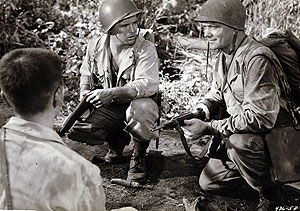 In literature, as in life, politics is as important as talent, and Mailer, who died in November 2007, at age 84, was the ideal candidate to wear the new literary crown--the one that had been worn by Hemingway and Steinbeck before him. The White Protestant Literary Establishment was crumbling and ready to make way for a Jewish boy from Brooklyn who had gone to Harvard, had been shipped overseas, and had returned home to write his big novel. In addition, Norman was brash, photogenic, and had a wonderful sense of publicity that rivaled even Hemingway. After his discharge from the army as a private--Mailer had been busted from a non-com for insubordination--he wrote The Naked and the Dead in fifteen months. Later, in Advertisements for Myself (1959), Norman recalled that the words "flowed" and that he doubted "if ever again I will have a book which is so easy to write." Norman and his first wife, Bea Silverman, lived on money they had saved during the war, while Mailer worked on the book in Brooklyn and Provincetown, Massachusetts. The novel was edited by a struggling writer named Charlie Devlin who lived in the same Brooklyn rooming house as the Mailers and who was used as a model for a character in Norman's second novel, Barbary Shore. After the manuscript of The Naked and the Dead was completed, the venerable Boston house of Little, Brown turned it down because of its excessive profanity. The book was then purchased by Rinehart and Company for a $1,250 advance. The potential obscenity problem was ingeniously solved by inserting the word "fug" in place of the offending word--and Norman and Bea went to Paris to await publication. | |
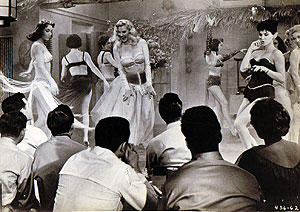 | In 1949, Mailer headed for Hollywood to try to sell The Naked and the Dead to the movies. Initially, Norman wanted to write the screenplay himself, but there were no takers. Through a friend, actor Mickey Knox, Norman sold the rights to a small production company owned by Burt Lancaster and Harold Hecht. Lancaster was interested in the role of Lieutenant Hearn, the polished staff officer with liberal leanings (whom some thought Norman had partly modeled on himself). Mailer retained creative control, and when Lancaster's company failed to produce an acceptable script, the young author returned the advance. |
Mailer and Bea remained in Hollywood for a time and socialized with the film colony. Norman and his close friend, Jean Malaquais, were working on a screenplay for Samuel Goldwyn that went unproduced. Malaquais, a Polish-born intellectual who later translated The Naked and the Dead into French, was an outspoken anti-communist and constantly antagonized Norman's Hollywood guests, including Charlie Chaplin. Moreover, Norman never seemed to adapt to the film colony's social scene. After a buffet dinner party at the Mailer's, Marlon Brando supposedly told his host, "What the f--k are you doing here, Mailer? You're not a screenwriter. Why aren't you in Vermont writing your next book?" (Peter Manso, Mailer, Penguin Books ed., 1986) While in Hollywood, however, Norman picked up the local color and background material that went into his third novel, The Deer Park, about the House Committee on Un-American Activities' investigation of director Elia Kazan and the film industry. (According to James Baldwin, Malaquais "did not like The Deer Park," which was sympathetic to HUAC's victims, an opinion that "astonished" Norman but not the perceptive Baldwin.) After Mailer returned to New York, and resumed his career as a novelist and political journalist, he finally sold the screen rights to The Naked and the Dead to an independent production company run by Paul Gregory and Charles Laughton, the noted Broadway and film actor. According to Gregory, Mailer received $250,000 "up front." This was an enormous advance for its time and one that left the young producer strapped to find additional financial backing to make the movie. Gregory had produced plays on Broadway by George Bernard Shaw and Stephen Vincent Benet and in 1955 produced his first film, The Night of the Hunter, which Laughton directed and which has since become a film classic. | |
Brilliant, self-taught, Gregory was not deterred by the sprawling structure ofThe Naked and the Dead which apparently had discouraged an established filmmaker like Sam Goldwyn, who had earlier shown some interest. Although Mailer had no control over the script, Laughton met with him in New York to discuss the project. Laughton had re-written James Agee's script forThe Night of the Hunter, and, as Gregory recalls, wrote "this wonderful screenplay" of The Naked and the Dead. But Laughton had been exhausted by re-writing and directing The Night of the Hunter, and his health was failing. Growing increasingly reclusive, he dropped from the movie, and Gregory was forced to shop the project around. Finally, Warner Brothers agreed to finance the production, in exchange for almost total control. As director, the studio assigned Raoul Walsh (1887-1980) who was at the tail end of a brilliant career at Warners. He was known as a "blood and guts" director whose films had included two great Cagney gangster movies, The Roaring Twenties (1939) and White Heat (1949). 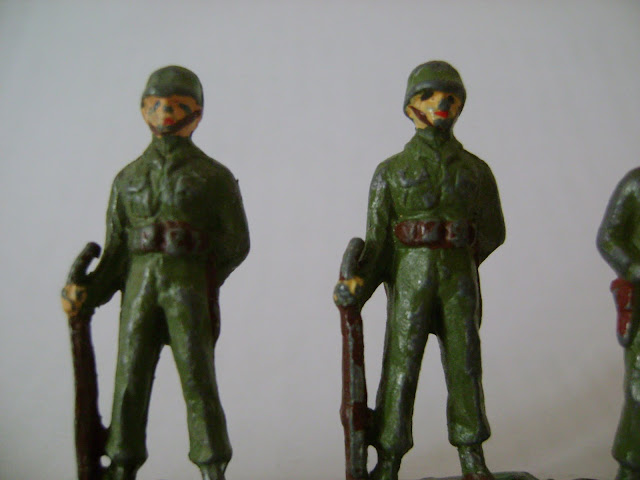 comet 30mm Walsh had the script re-written--often as the film moved through production--and added vivid battle scenes including flame throwers and tanks, that were nowhere in the novel. 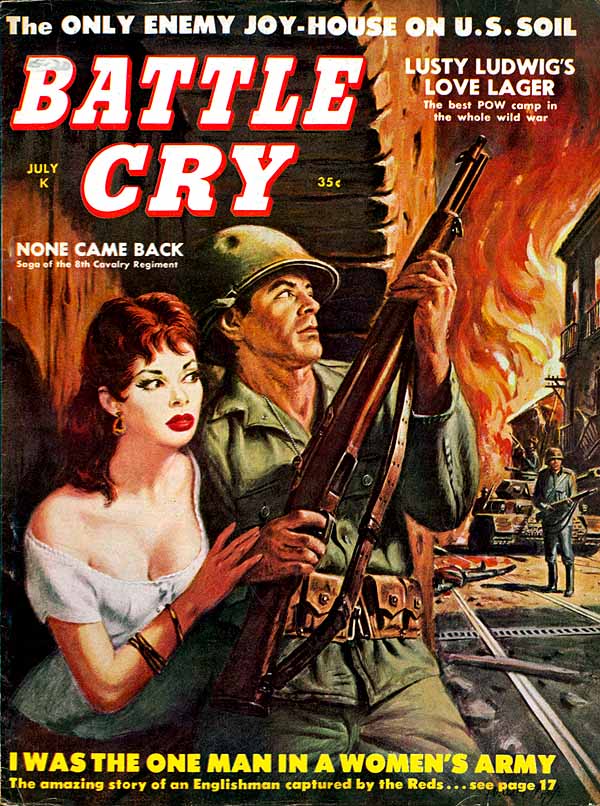 | 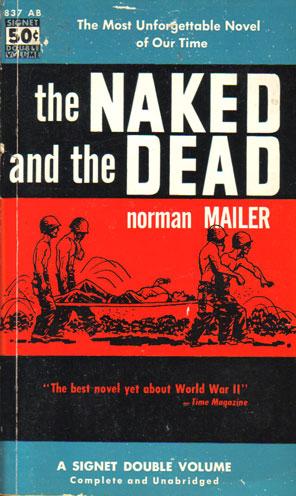 |
| Clift Robertson was cast as the idealistic Lt. Robert Hearn. In the film, the Hearn character is wounded, not killed as he was in the book. Aldo Ray, a husky voiced actor, who had appeared in Battle Cry  (1955), which Walsh directed, played Croft, the tough, embittered sergeant who shoots a prisoner in cold blood. A young Joey Bishop was selected to play Roth, the Jewish soldier who is accidentally killed on patrol. In the novel, Roth was drawn as an intellectual who is ambivalent about his Jewishness but is unable to escape anti-Semitism. The film portrayed the cruel anti-Semitism of Roth's fellow soldiers but ignored the complexities in his own personality. Other actors included Raymond Massey who played the priggish general enamored with the young lieutenant; L.O. Jones, another veteran of Battle Cry, played Wilson, a hard drinking country boy who dies in the book (but makes it through the movie). (1955), which Walsh directed, played Croft, the tough, embittered sergeant who shoots a prisoner in cold blood. A young Joey Bishop was selected to play Roth, the Jewish soldier who is accidentally killed on patrol. In the novel, Roth was drawn as an intellectual who is ambivalent about his Jewishness but is unable to escape anti-Semitism. The film portrayed the cruel anti-Semitism of Roth's fellow soldiers but ignored the complexities in his own personality. Other actors included Raymond Massey who played the priggish general enamored with the young lieutenant; L.O. Jones, another veteran of Battle Cry, played Wilson, a hard drinking country boy who dies in the book (but makes it through the movie).Upon its release in 1958, The Naked and the Dead was a financial success, but his experience with "the octopus of Hollywood " soured Paul Gregory on filmmaking, and he resumed his successful career on Broadway. Norman Mailer saw the movie one night with his second wife, Adele, and complained to her that Hollywood "had ruined his story." Here, in an exclusive interview with American Legends, conducted via telephone from his home in Palm Desert, Paul Gregory, now in his eighties, recalls the making ofThe Naked and the Dead.  | |
| AL: | After making The Night of the Hunter, why did you and Charles Laughton want to film The Naked and the Dead? |
| PG: | Laughton admired parts of the book. I thought it was wonderful and still do. Mailer was so young, yet he had this ability to put into words a vision. It's a war story, but it's more about people in war than war itself. There are no major battles, but the characters and the jungle episodes were quite wonderful. I particularly loved the changes that the little Jewish boy [Roth] went through. His character was essential to the story. If we could have done Laughton's script, it would have been magnificent. |
| AL: | Why did Charles Laughton drop from the project? |
| PG: | After Charles had written this wonderful screenplay, he could not go on with it. He just could not. A kind of freeze overtook him. It's the only way to put it. He would go to Palos Verdes and stay there for three or four weeks at a time. I think he knew better than I did what to expect because he had been through independent productions when he was in business with Erich Pommer in England when they did Jamaica Inn. (1939) He knew the machinery, and he knew it was going to be a long ride. Charles didn't feel he could take it. That's what it got down to. I was stuck with it. I had to go on. I did what I had to do. |
| AL: | The Naked and the Dead was one of the major books of 1948. Why wasn't it snapped up by Hollywood? |
| PG: | It had gone through bidding, but Mailer and his attorney, Charles Rembar, were asking too much, like half a million, originally. There had been talk of Stanley Kramer making the movie, and Selznick had even expressed an interest--but I don't think it had gotten to the point of serious negotiations. Mailer was also talking to Goldwyn for whom he was writing another screenplay. After I got the book, I had a long talk with Goldwyn. He was a shrewd, smart man, but he failed to see the fiber of the book, the social commentary on human nature. Sam wanted humor. He'd say, "I vant some humor." There wasn't any humor. He wanted sex, and there was none. He said, "Where's the naked woman?" There was no naked woman. It wasn't that kind of naked. That was Sam. |
| AL: | Did you meet with Mailer to discuss the project?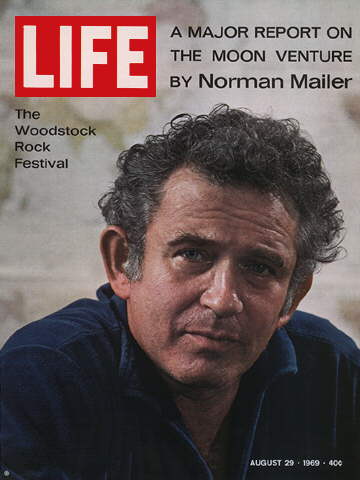 |
| PG: | I had dinner with Mailer. I had a play running on Broadway, and it was a smash hit, but I wasn't impressive enough for him. If I were Samuel Goldwyn or David Selznick, or someone like that, I would have gotten further with Norman. I thought he was difficult. Mailer has always been known as being strange tempered. I didn't dislike him. I just didn't understand him. I couldn't remember a thing we talked about. He asked me such esoteric things. I felt very stupid--or like he's nuts and I'm nuttier. That's how I came away. |
| AL: | You ultimately lined up an independent production deal with Warner Brothers.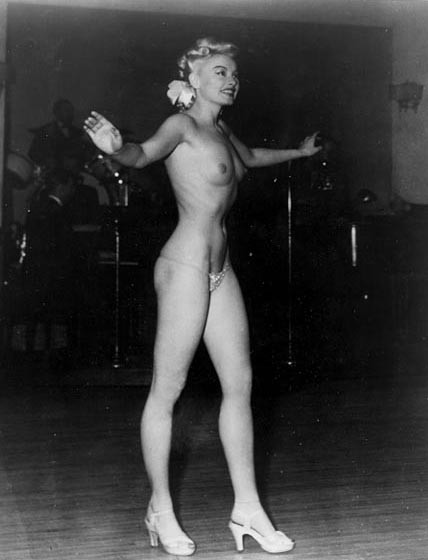 |
| PG: | I went to Warner Brothers. Jack Warner asked me if we were going to put any "tits" in the movie. And that's the term he used. Literally. He said, "Raoul will put some tits in it," and that's what he did. He got Lillie St. Cyr  to do a strip tease that had nothing to do with the book. The budget should have been a couple of million, instead of the 900,000 they spent. to do a strip tease that had nothing to do with the book. The budget should have been a couple of million, instead of the 900,000 they spent.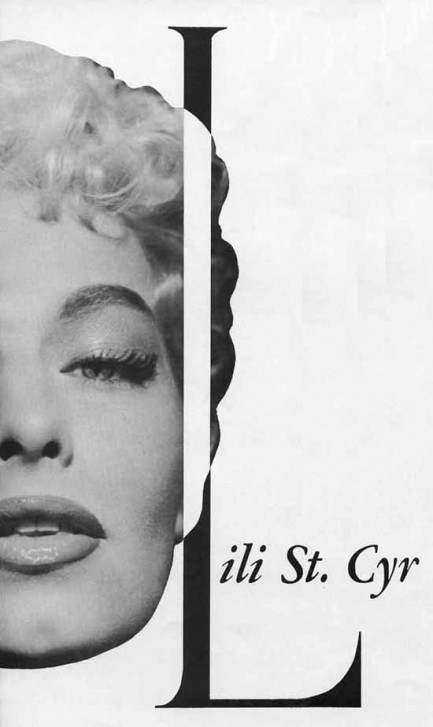 They cut every corner possible. It was Raoul's last picture for Warner Brothers. They were glad to get his contract fulfilled. I had to get the movie done, or I would have lost the thing. I had a production date. I wanted to get my money back. They cut every corner possible. It was Raoul's last picture for Warner Brothers. They were glad to get his contract fulfilled. I had to get the movie done, or I would have lost the thing. I had a production date. I wanted to get my money back. |
| AL: | What was Jack Warner like to work for? |
| PG: | He never came on the set. Steve Trilling worked with us on casting. But Warners was a tightly run studio. Jack was in charge. He didn't go on location in Panama, but after he got the first rushes, he wired me to call him. He thought it was great stuff, but he wanted more blood. "We need more blood," he said, "Walsh likes to pull teeth. Get him to pull teeth," he told me. |
| AL: | You got to know Jack Warner well. |
| PG: | I liked him. He wore rouge, but I liked him. He had those rosy cheeks, and I used to wonder if he didn't realize how ridiculous he looked. He sat there under a light on his desk. But he was very nice to me. Jack's jokes had a serious undertow, you know. They say, "Don't ever play tennis with a one armed man." Look at what they have today. The moguls had a place. There's no big shining light anywhere today like them: Jack, Louis B. Mayer. |
| AL: | How did you go about casting the movie? |
| PG: | I started out wanting that wonderful actor, Richard Widmark, for Croft. For General Cummings, I wanted Alfred Lunt, the New York actor, and for Hearn, I wanted Monty Clift. I talked to Clift, and he liked the part. I was interested in Dane Clark for the Jewish boy, Roth. He would have been wonderful. He had that sensitive face I adored. It never got to that. When I presented Warners my thought on casting, they said, "Absolutely, no. We won't go with that price for the picture..." and so on. I had done the field work to see if those actors were interested and available. Laughton was very excited about directing that kind of casting, but by the time we got a commitment from Warners, they had so mutilated the script, there was no reason to go back to any of those people. |
| AL: | Aldo Ray (1926-1991) was cast as Sergeant Croft and Raymond Massey, an Oxford educated actor, played General Cummings. |
| PG: | Raymond Massey had been touring in my show, John Brown's Body, based on the Stephen Vincent Benet book. When the picture started, the final tour was just closing. I wanted him for the General. He was very good, but he played it straight. The role should have had the clicking of heels etc. that Mailer hinted at in the book, but it didn't. Aldo Ray was drunk the entire time. He was a very sweet guy, but he was gone. He drank drank drank. Raoul Walsh would say, "Let's get him in the morning cause in the afternoon it's over." That's what got me about this business. I just could not get used to it, actors who got all this money and then didn't behave professionally. The English actors have classical training. They perform like professionals. You take someone like Aldo Ray who was just picked up and catapulted into stardom, and then he was just a sponge for booze. He killed himself drinking, not living up to his moral contract. I morally went into these projects. I didn't go into them to ski down a slope. I thought they had something that I could help be said. |
| AL: | Mailer's book hinted that a character like General Cummings might represent a new order of American fascism. |
| PG: | The book didn't come through in the final screenplay. That's the point. I thought the book was brilliantly enunciated in Laughton's script, and it wasn't in the script that finally emerged. Walsh worked with Terry Sanders and Denis Sanders who had helped Laughton re-work Agee's screenplay for The Night of the Hunter. Then Raoul got some writer at Warners to come in and do what he wanted done. This writer had written a war story and some comedy. He was on location with us in Panama. He and Walsh mutilated the script. |
| AL: | Can you give an example of changes that were made? |
| PG: | The part of Roth, the Jewish soldier, wasn't developed enough to have the significance it was supposed to have and that Laughton gave it. To break our hearts when Roth died, we should have known him better. |
| AL: | Raoul Walsh had directed a number of Cagney movies, and High Sierra (1941) with Humphrey Bogart. What was he like on the set? |
| PG: | Raoul was a big personality On the set, he was very strict. He had his own crew on Battle Cry, the film about the marines in the Pacific. They didn't even have a producer. Raoul could have made the movie without me. All the people around him were "yes" people. They'd say how wonderful great terrific everything was. I'd wonder, What are they talking about? It's not what that part of the book had to do with at all. |
| AL: | How was Walsh in handling actors? |
| PG: | He had this group he always worked with. One actor, L.Q. Jones, had been with him in Battle Cry. He would talk with them, and they would do a little bit of mumbling and what have you and then he'd get the shot he wanted. There wasn't much improvising. |
| AL: | How did the film do at the box office? |
| PG: | Warners did very well with it. My God, they had billboards up. You would have thought it wasGone With the Wind. It grossed eleven million dollars which for that time was very good. Nothing ever got back to me from Mailer. I knew I had a bad picture. It could have been a good picture if it had had the budget, and the studio had taken the time to make it right. Warners let me know the door was open if I wanted to make another movie, but I wasn't interested. |
Successful Blog
I haven't got many followers but I do have this, everything that appears on my blog or blogs sooner or later will appear on Toy soldier magazine as regards concepts (recently they did Texas Rangers and have started doing big photos. I don't think I'll get any feedback from them saying thanks for the idea but I don't expect any anyway since they never did pay me for an article I sent in that more or less appeared under a different name rewritten,this was about the Italian soldier firm Antonini, what can you do about that?
Thats not slander because the departing editor wrote me saying more or less this. When the editor who took over left there was not much love lost between him and the owners it seems although that is my impression.There was a parting note saying the editor has now left the building or shit like that , this didn't seem too nice.But anyway I've noticed that any kind of design or idea or concept finally ends up in the magazine. But I take it all as a kind of praise and its most likely unconsciously done. Its legal of course .
Subscribe to:
Comments (Atom)



